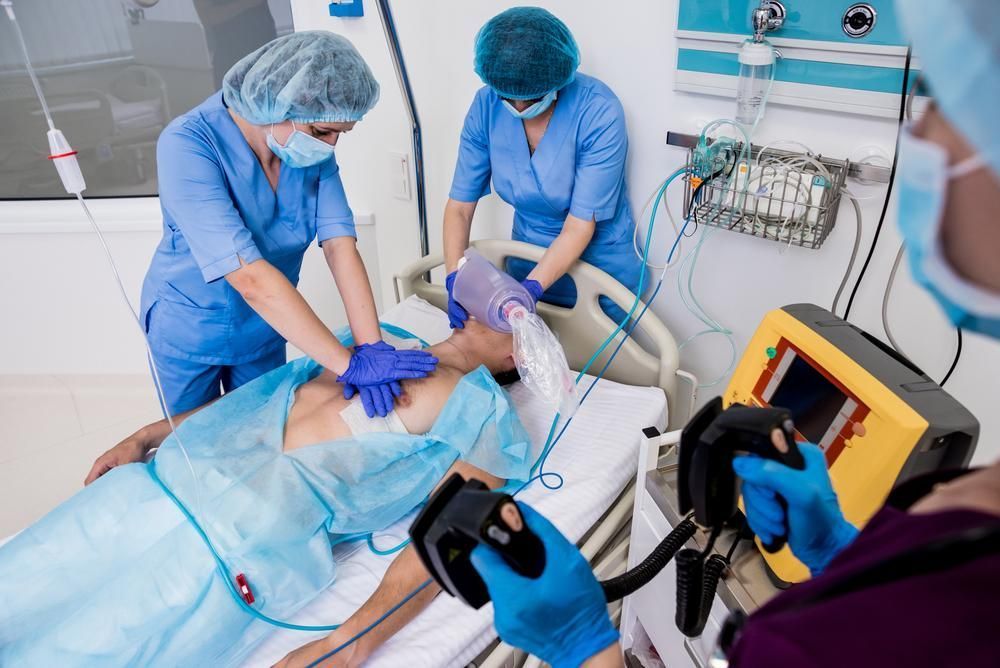Once staff returns from their holiday break, the new year period can be an impactful time to harness energy to motivate an organization and healthcare simulation program forward. Start the year off with the best foot forward and launch clinical simulation into a great space for a powerful year ahead. Make 2024 the best year yet for healthcare simulation programs. This article by Erin Carn-Bennett, MSN, RN, will explore the promise and hope found in the new year of a healthcare simulation program and how to use this energy to advance clinical simulation programs forward.
Set up Systematic Approaches or Review What is in Place
The start of the year can be a great time to consider any automated and current system in place within the healthcare simulation program. Review what systems are currently in place and how effective are these current systems. This review can be completed by an individual or the program as a collective. Ease of use, how often used, and the useability should be considered in the review. Systems to review may include how clinical simulation participants book into the program’s clinical simulation courses and how they are advertised. Other systems for consideration may include how upcoming clinical simulation courses are advertised and planned for the year.
The systems desired to be in place should also be considered at the commencement of the year and whether now, at the start of the year, is the time to advance them into the program. With collective motivation and energy after the holidays, the start of the year is the best time to start or consider these new projects. Ask within any current networks how other clinical simulation programs complete these tasks. Most healthcare simulation programs are incredibly supportive of other programs and are often generous to share lessons and solutions to issues that will advance other clinical simulation programs.
Dream Big and Put Visualizations on Paper
Visualizations and goal setting are incredibly powerful tools to harness in the new year. Sit down as a collective program and consider all team members’ goals individually and as a program. This may be in the known goal-setting formats such as SMART (specific, measurable, attainable, realistic, and time-based) goals or another such method. A visualization and goal-setting exercise is a great concept to start the year with a specified team planning day. This will encourage a culture of psychological safety if staff are encouraged to share ideas and contribute to causes that have value to them. A clear timetable and schedule for the day will enable the clinical simulation program to stay on track and to complete useful work on the planning day.
Review Current Plans in Place For the Year and Know Your Audience
A visual board of any clinical simulation education sessions planned for the year ahead can be useful to all team members. Take into consideration any seasonal flow and what impact that will have on healthcare simulation scenarios and courses. For example, clinical simulation scenarios or courses may be more likely to be canceled in the winter months due to an increase in clinical and staff number demands and an increase in staff sickness. Plan carefully around popular summer and autumn months when a large volume of requests for clinical simulation may occur. Consider what clinical simulation courses are the most important to be run for the healthcare simulation program. These resources will be required in terms of faculty numbers, and these courses should be prioritized first. Consider when clinical simulation program staff want to take vacation and ensure that enough resources will be available to cover courses on offer.
Consider those who utilize the clinical simulation program as product or service consumers. Ensure that the needs of the clinical simulation participants are met in this manner. Consumer or participant experience should be of the utmost importance in a clinical simulation program. At the commencement of each year, consider the audience and consumers of the clinical simulation from the previous year and if their needs have been met from attendance to clinical simulation scenarios and courses. Consider what other consumer groups the clinical simulation program may wish to encourage to attend clinical simulation at the organization or workplace and make plans as a collective team to make this happen.
Be a Business and Organizational Psychology Nerd
The business and organizational psychology worlds have some incredibly useful parallels that can be transferred into clinical simulation programs. Leaders within these circles, such as Simon Sinek, Adam Grant, and Brene Brown, have incredibly insightful and transferable information that can be utilized in the clinical simulation program space. Every delivery element can easily be consumed for free on their popular podcasts, from how to cater to learners, leadership, organizational delivery, and almost anything inspiring in between. Sign up for their newsletters to have regular inspiring updates that can be used to inspire change and improvement in the clinical simulation program workplace.
View the LEARN CE/CME Platform Webinar Building Better Clinical Simulation Experiences Through Collaborative Cross Staff Training to learn more!
Have Feedback Mechanisms and Processes in Place and Review Regularly
Participant feedback from clinical simulation-based education is incredibly valuable to clinical simulation programs. There is a lot of value in the voice of participants that can be used to adapt and improve for next time. This data can also be exported to create reports and infographics to demonstrate throughputs and outcomes to any funders of clinical simulation. If preferred, ensure you set up usable feedback with QR codes on slide decks and written forms. There are many options available online that are little to no cost and are worthwhile to put some time and effort into to scope the details and ensure their useability meets the needs of the clinical simulation program. The feedback mechanism should be reviewed on an annual basis and improved as possible. The start of the year is a great time to consider this review process.
This article has explored how to start 2024 by using high energy and motivation at the start of the year and how to turn this into the creation of a productive and successful year ahead in clinical simulation. There has been discussion around review processes for what is currently in place and how to plan for the year ahead. Other industries that may have parallel useful and transferable information for clinical simulation have also been discussed. To give a clinical simulation program the best chance of success, there should be time dedicated to planning and reviewing processes while moving forward and upward.








